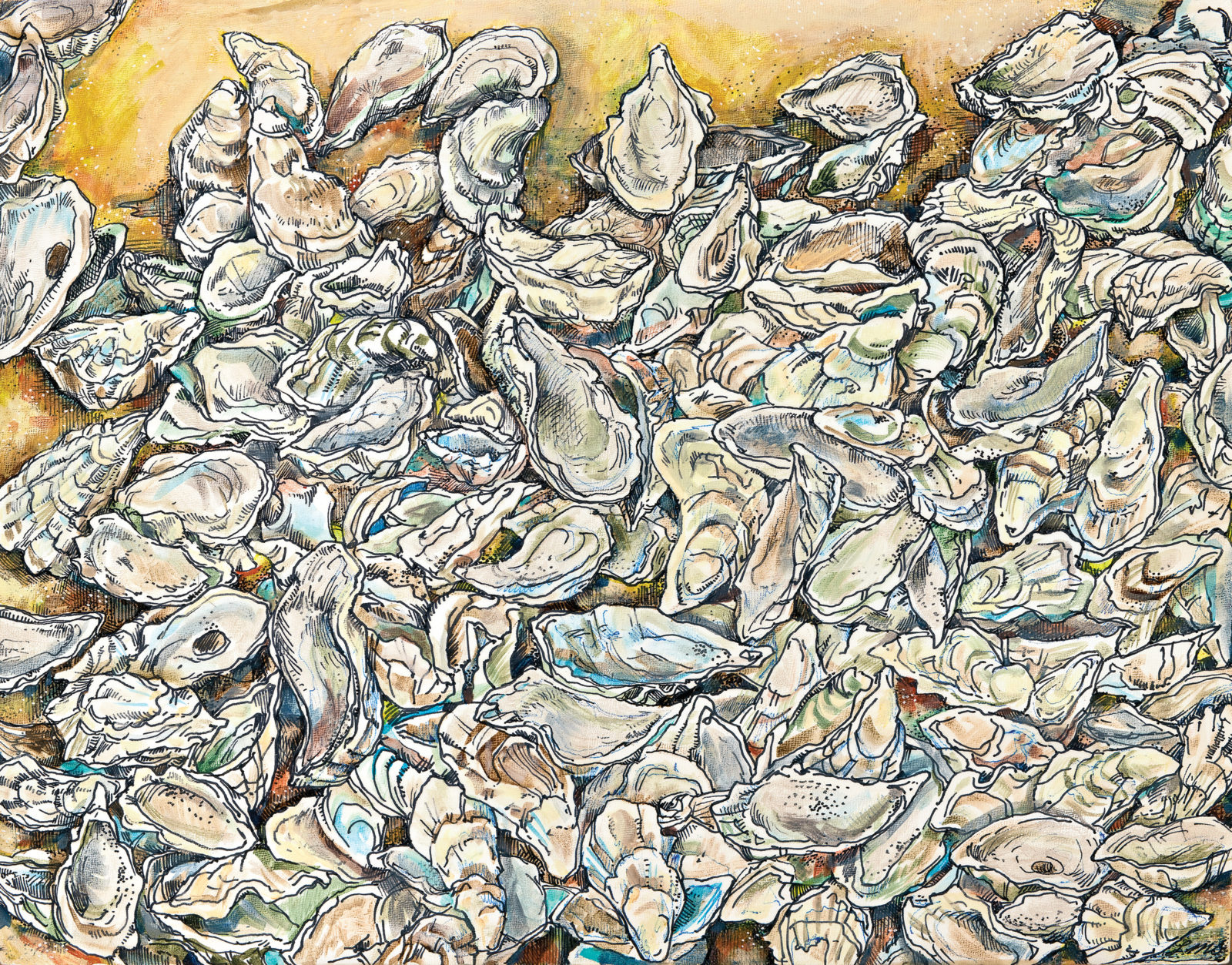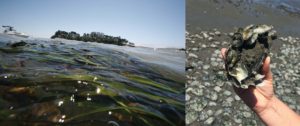Linda Hunter pulls up to Bay Natives Nursery in Bayview-Hunters Point and opens the rear hatch of her gray Prius. Inside are several white plastic buckets full of shells. They come from oysters eaten the previous day by customers at a posh Financial District eatery. Kitchen staff save this refuse for Hunter, who collects the shells every Saturday, usually from three different restaurants.
Hunter is director of the Wild Oyster Project, which she founded in San Francisco three years ago. The nonprofit’s goal is to help restore to its rightful place San Francisco Bay’s native oyster species, the diminutive Olympia, with the help of oyster shells discarded by diners. “There used to be billions of oysters in the Bay, and then they were summarily buried alive by sediments coming down from the north during the Gold Rush,” Hunter says. A booming human population overharvested what remained.
The Wild Oyster Project is inspired by New York City’s Billion Oyster Project, which since its launch in 2010 has amassed more than 1 million pounds of shells from more than 70 restaurants. The shells Hunter gets locally come mostly from farmed Pacific oysters, but any old oyster shell returned to the water can make conditions more favorable for young native oysters.
So every week, Hunter and a fleet of volunteers visit six restaurants in San Francisco, Sausalito, Berkeley, and Alameda. They head straight to the kitchen or rear entrance, grab the filled bucket with the words “SAVE YOUR SHUCKS!” printed on its side, and leave behind an empty or two. Then they clean the shells, picking out trash as needed — napkins, straws, lemon wedges, beer cans — and pile them for curing at one of five different midden sites between Nicasio and Oakland.
After arriving at Bay Natives with her haul for the day, Hunter dumps the shells on the ground, to the delight of the nursery’s resident hens, who eagerly pick off any remaining food scraps. The shells must dry in the sun for at least a year, eliminating potential pathogens, before they’re ready for reuse.
Now in its third year of collecting, the Wild Oyster Project has amassed about 8,000 pounds of shell and hopes to collect 5,000 more pounds by the end of 2019. Once cured, the shells can be loaded into containers — bags or old crab pots — or crushed and mixed with concrete into heavier, more stable “reef balls,” and then deployed in the muddy shallows of the intertidal zone.
Baby oysters have “wings” that allow them to swim freely for their first two weeks of life and a “foot” with which they attach to hard surfaces, including shells. Because the Bay has lost much of its natural oyster habitat, the mollusks will affix to anything hard: old creosote pilings, plastic chairs half-buried in muck. “You could drive a school bus into the Bay, and it would attract oysters,” Hunter says. “They just are desperate to find something to latch on to.”
Yet oysters prefer old shells because, in addition to serving as a suitable anchoring surface, they provide a ready source of calcium carbonate, which young oysters then use to build their own shells. “Oysters are attracted to other oysters,” Hunter explains. “They build their reefs upon remnants of their ancestors. Once you’ve got a good pile of shell going, you can within a year or two see a healthy population of native oysters.”
Using discarded shells to support native oysters has worked on the East Coast, including in New York Harbor, where some 28 million oysters have been restored, according to the Billion Oyster Project. The concept has also been demonstrated on a small scale locally on the San Rafael shoreline by the California State Coastal Conservancy’s Living Shorelines Project, which used shells from the now-defunct Drakes Bay Oyster Company. In a separate project led by Hunter off Richmond’s Point Pinole, since 2013, one hundred reef balls have accumulated tens of thousands of Olympia oysters.
Oyster reefs provide a range of environmental benefits, such as buffering of wave action, mitigating the effects of rising seas, and providing habitat for native plants and other organisms that live on or near the seafloor. The restored Point Pinole reefs, for instance, have attracted fish and birds, increasing biodiversity in the area. Oysters also filter water — up to 12 gallons daily, for Olympias — which could help remove heavy metals, excess nitrogen, and other pollutants from the Bay.
Mounting interest in the approach suggests that jettisoned oyster shells could become a major new tool for bringing back oysters. Late this fall, in collaboration with the Port of San Francisco, Hunter will begin a reef restoration project at Heron’s Head Park in Bayview-Hunters Point, across the street from Bay Natives Nursery. She will use old crab pots filled with restaurant shells to create new oyster habitat.
Another reef restoration project is underway on San Francisco’s north shore near Crissy Field. And the Coastal Conservancy’s Marilyn Latta, who spearheaded the Living Shorelines Project, says she, too, may look to restaurants for a steady supply of shells for future projects.
“It’s an exciting way that people can engage in Bay restoration, just by eating at restaurants,” she says. υ



-300x221.jpg)